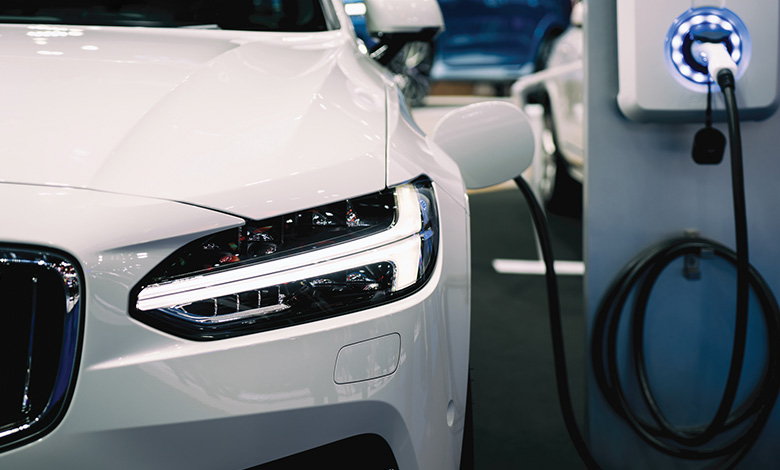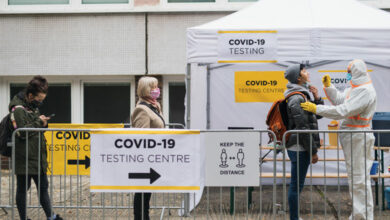EV charging infrastructure to be expanded

The Department for Infrastructure is targeting an incremental increase in electric vehicle charging infrastructure, ensuring that no resident in Northern Ireland is ever situated more than 25 miles away from EV charging infrastructure.
It is estimated that Northern Ireland residents are all currently situated within 30 miles of public electric vehicle charging infrastructure.
The action plan outlines six courses of action to be undertaken with the aim of helping Northern Ireland play its part in the UK’s goal of banning the sale of new petrol- and diesel-powered vehicles from 2030.
The goals for the action plan are: Future-proofing electrical capacity at key strategic sites along key transport corridors; a review of connection costs; the establishment of oversight group to ensure a co-ordinated approach to EV infrastructure; paying for charge; consumer priorities; and the expanded usage of EV charging at park and ride sites.
Future-proofing electrical capacity
The first course of action outlined in the action plan is the expansion of electrical capacity along key transport corridors in Northern Ireland, namely the motorways and dual carriageways.
The report states that the transition to electric-based transport, still in its infancy, will place a significant increase on the demands of Northern Ireland’s electricity system, both in terms of demand and the expansion of existing infrastructure.
“At existing sites, charge point operators (CPOs) may wish to expand the provision of charge points to meet demand from EV users. We need to ensure the grid has the capacity to satisfy any forecast demand.
“We are also likely to see the emergence of heavier duty EVs within the commercial sector which are likely to require charging en route to keep moving. The requirements of heavier duty EVs are considerable with some suggestions that charging hubs would require a total power output of 3,500kW to meet the charging needs of the commercial sector.
“[The Republic of] Ireland will be complying with the Alternative Fuels Infrastructure Regulation which requires it to have suitable charging hubs every 60km along its TEN-T road network, with a total power output of 1,400kW by 2025, rising to 3,500kW by 2035.”
To meet the target of ensuring that all citizens are within 25 miles of electric vehicle charging infrastructure, the report outlines that the Department for the Economy will release a report outlining further details on reaching this goal in June 2023, including strategic sites which can be utilised to expand existing infrastructure.
The upcoming report will be underpinned by factors such as the cost which will be applied to the grid. The action plan further outlines a target of 1,000 EPVs in Norther Ireland by 2025, in addition to a target of enabling the provision of heavy-duty EV charging hubs every 60km, with a total power output of 1,400kW with one individual 350kW charger, increasing to a total output of 3,500kW with an individual 350kW charger by 2035.
It is intended that these infrastructure developments will be completed by December 2025.
In addition to upscaling its EV charging infrastructure, the Department for Infrastructure is aiming to conduct a review of connection charges for EV charging points, which currently stand at a similar level for consumers as in Great Britain and the Republic of Ireland. The report states: “The cost of connecting to the grid is fully borne by a connecting customer for all works required at their connecting voltage and one voltage level above, including any required network reinforcement, and this is commonly referred to as ‘deep charging’ the connecting voltage on one voltage level above. Whereas, in Great Britain and [the Republic of] Ireland a larger proportion of these costs are ‘socialised’ across the customer database.”
To forward this proposal, a taskforce will be established which will carry out a review which takes Northern Ireland’s smaller consumer base and limited demand into account, ensuring that the system continues to incentivise the public to transition its mode of transport away from internal combustion engine vehicles to EV. This review will be published by December 2023.
Paying to charge
Currently, access to EV charging points in Northern Ireland is dependent on possession of an ecarNI Access Card. The Department for Infrastructure proposes abolishing this necessity in an effort to make the infrastructure more accessible, with an objective of establishing a pay-per-use system.
“The taskforce recommends that pay-for-use is introduced immediately by ESB on the current network as well as any future publicly accessible charge points whilst recognising that commercial entities may offer incentives to encourage use of their sites.”
The Department states in its action plan that this is to be established by December 2022, although it has not been confirmed, as of January 2023, whether this has been achieved.
The mechanism of introducing pay-to-charge is to be complemented by the expansion of EV infrastructure at park and ride facilities. “This is a new and emerging area for the provision of transport and has the potential to be confusing for consumers and could even cause consumer detriment in some cases if protections are not put in place.”
It is intended that this expansion will be implemented en masse by December 2024.






